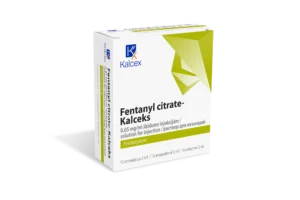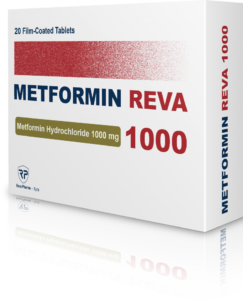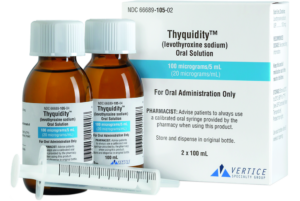Fentanyl
Fentanyl is a potent synthetic opioid medication commonly used to manage severe pain, especially in cases of surgery, cancer, or chronic pain conditions that don’t respond well to other treatments. It works by binding to opioid receptors in the brain and spinal cord, altering the perception of pain.

Fentanyl Uses
- Pain Management: Fentanyl is primarily used to manage severe pain, especially in cases such as post-surgery recovery, cancer-related pain, and chronic pain conditions.
- Anesthesia: In medical settings, fentanyl is often used as an adjunct to general anesthesia during surgeries to manage pain before, during, and after procedures.
- Palliative Care: It can also be used in end-of-life care to alleviate pain and discomfort in patients with terminal illnesses.
Dosage and Administration: Fentanyl comes in various forms, including patches, lozenges (also known as “lollipops”), injections, and nasal sprays. Dosage varies depending on factors such as the patient’s pain tolerance, previous opioid exposure. Due to its strength, careful dosing and medical supervision are essential to prevent overdose.
Injection: The appropriate dosage of fentanyl injection for pain management varies depending on factors such as the individual’s medical condition, pain severity, opioid tolerance, and the specific situation. Fentanyl is a potent opioid, and its dosing should be determined by a qualified healthcare professional. Dosages are typically measured in micrograms (mcg). The initial dosage for fentanyl injection in adults can range from 25 to 100 mcg, given slowly and under medical supervision. Additional doses may be administered as needed based on the patient’s response and pain level.
Patches: The dosage of fentanyl patches, also known by brand names such as Duragesic, depends on factors like the individual’s pain intensity, opioid tolerance, and response to the medication. Fentanyl patches provide a controlled release of the medication over a specific period, typically 72 hours (3 days). Dosages are measured in micrograms per hour (mcg/h). Common dosages of Fentanyl Patches include:
- 25 mcg/h: This is often used as the starting dose for patients who are opioid-naïve, meaning they haven’t been previously exposed to opioids. It’s also used for patients with mild to moderate pain.
- 50 mcg/h: This is a common dosage for patients with moderate to severe pain who have developed some opioid tolerance.
- 75 mcg/h and 100 mcg/h: These higher dosages are generally reserved for patients with significant opioid tolerance and severe, chronic pain.
Nasal Spray: Fentanyl nasal sprays, such as Lazanda and Subsys, are used for the management of breakthrough pain in adults with cancer who are already receiving and are tolerant to around-the-clock opioid therapy for their underlying persistent cancer pain. Breakthrough pain is a sudden and intense flare of pain that occurs despite ongoing pain management. Common dosages of Fentanyl Nasal Spray include
- 100 mcg per spray: This is often the starting dose for patients who are new to fentanyl nasal sprays and have not been using other strong opioids.
- 200 mcg per spray: This dosage may be used for patients with higher opioid tolerance and more severe breakthrough pain.
Lozenges: Fentanyl lozenges, also known as fentanyl “lollipops,” are used for managing breakthrough pain in patients who are already receiving and tolerant to opioid therapy for their underlying chronic pain conditions, typically cancer-related pain. Breakthrough pain refers to sudden and severe episodes of pain that occur despite ongoing pain management. Common dosages for fentanyl lozenges include:
- 200 mcg: This is a common starting dose for patients who are new to fentanyl lozenges and have not been on other strong opioids.
- 400 mcg: Patients with higher opioid tolerance and more severe breakthrough pain may be prescribed this dosage.
- 600 mcg: This higher dosage may be used for patients with significant opioid tolerance and intense breakthrough pain.
Tablets: Fentanyl tablets, such as Actiq and Abstral are designed to dissolve in the mouth, and they should not be chewed or swallowed whole. The tablet is typically placed under the tongue or against the cheek, and it dissolves slowly over time. Common dosages for fentanyl Tablets include:
- 200 mcg: This is often a starting dose for patients who are new to fentanyl tablets and haven’t been on other strong opioids.
- 400 mcg: Patients with higher opioid tolerance and more intense breakthrough pain might be prescribed this dosage.
- 600 mcg: This higher dosage may be used for patients with significant opioid tolerance and severe breakthrough pain.
Side Effects: Common side effects of fentanyl use can include:
- Nausea and vomiting
- Constipation
- Drowsiness or sedation
- Dizziness
- Itchy skin
Serious side effects that require immediate medical attention:
- Slow or shallow breathing (respiratory depression)
- Severe drowsiness or confusion
- Fainting or feeling lightheaded
- Seizures
Risks and Considerations:
- Potency: Fentanyl’s potency requires precise dosing to prevent overdose and potential respiratory depression.
- Addiction and Dependence: Like other opioids, fentanyl can lead to physical dependence and addiction, especially if misused.
- Respiratory Depression: Misuse, incorrect dosing, or combining fentanyl with other depressants (like alcohol) can cause dangerous respiratory depression.
- Tolerance: Over time, the body can develop tolerance, requiring higher doses to achieve the same pain relief.
Fentanyl is a powerful pain management tool when used correctly under medical supervision. Its potency brings both benefits and risks, emphasizing the importance of open communication with your healthcare provider about your pain management needs and concerns. Always prioritize safety, proper dosing, and responsible use to maximize its benefits while minimizing potential complications.
Medarchive.us does not assume any responsibility for any aspect of healthcare administered with the aid of materials provided. The information contained herein is not intended to cover all possible uses, directions, precautions, warnings, drug interactions, allergic reactions, or adverse effects. The information provided on our Web or Videos does not endorse drugs, diagnose patients, or recommend therapy. If you have questions about the medication you are taking or want to start as treatment, check with your doctor or medical health care provider.







